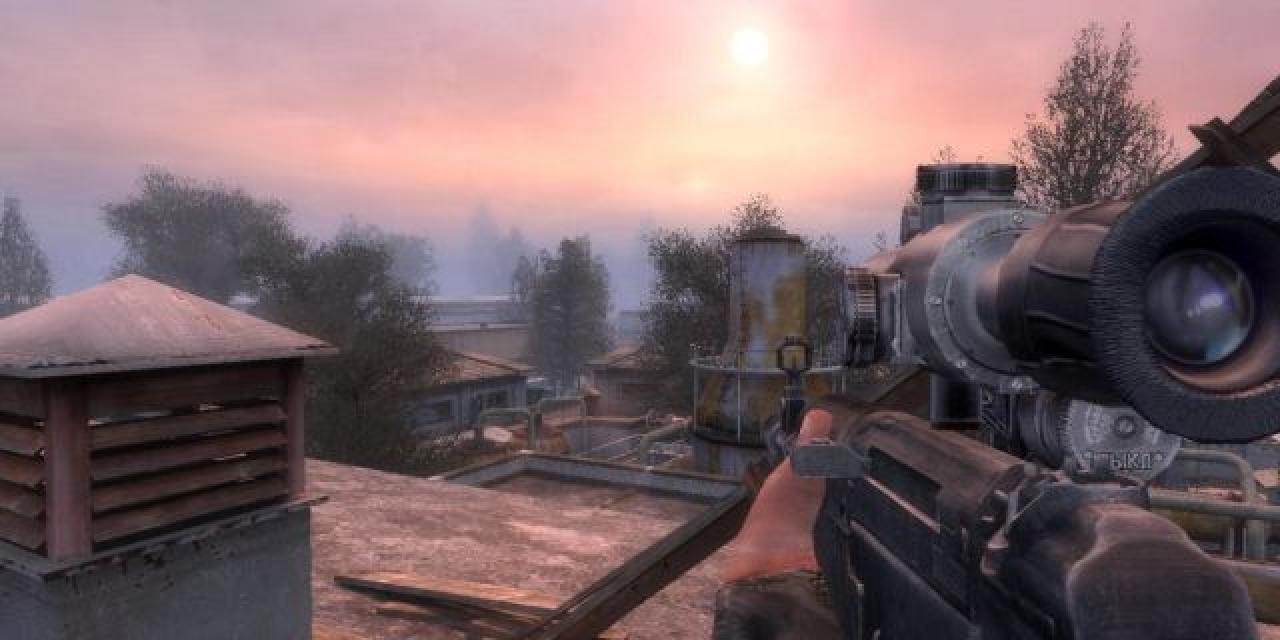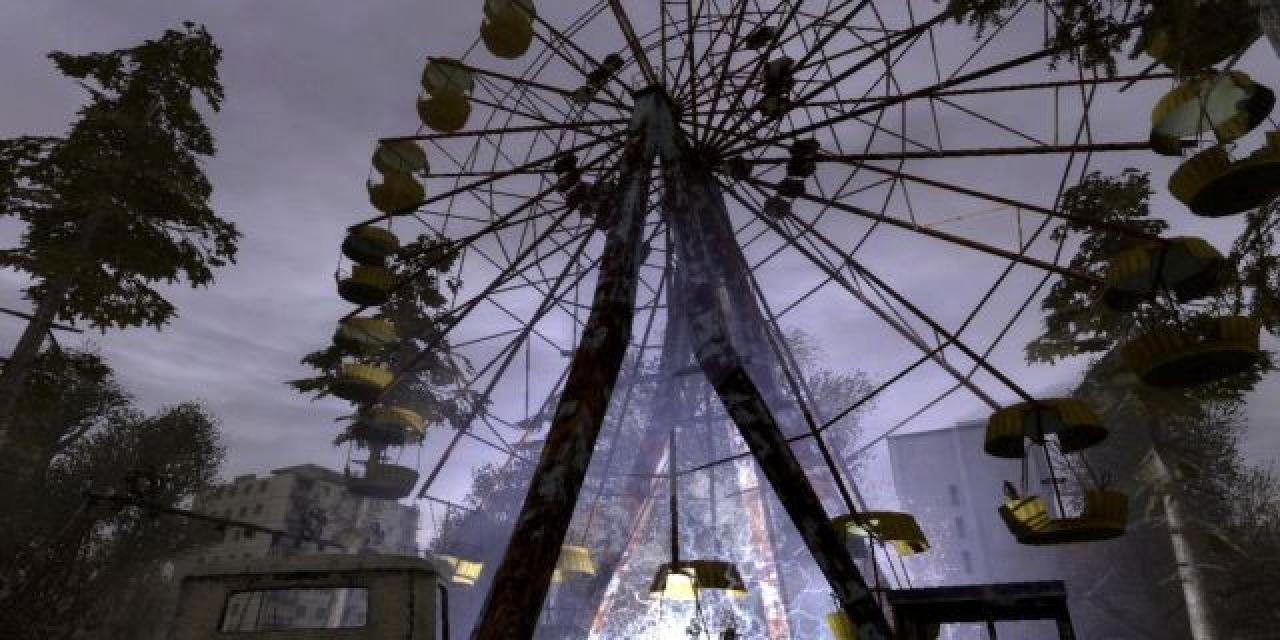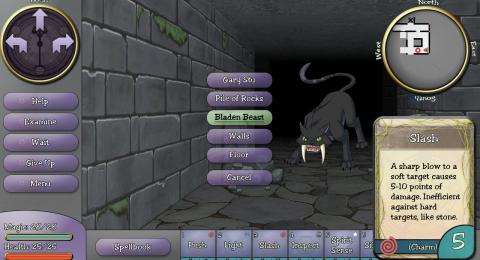

THQ and GSC Game World are gearing up for the release of S.T.A.L.K.E.R. Shadow of Chernobyl and havew now released a developer diary covering the design and creation of the game's complex combat system.
Getting down to developing the combat system in S.T.A.L.K.E.R. our ambition was to make it involving and fun to play, while at the same time realistic. The second goal was, due to the game having vast open-air spaces, to allow the player freedom to play the scenes from any side he would wish. This required us to develop a universal and complex combat system, able to function in many varied circumstances.
Initially we needed to provide the player with basic skills and abilities. Thus, we taught them to walk, run, bend and duck, jump from standing and sitting positions. So that the player could traverse the game expanses faster, we also enabled him to do quick sprints. Subsequently the run function proved quite useful when dashing for cover or away from grenades and even rockets. As high structures, watch towers and so on are plentiful in the Zone, we enabled the player to climb ladders while still allowing them to use one-handed weapons (pistols, knives).
As weapons are an essential component in S.T.A.L.K.E.R., it was logical for us to take the next step to work out the ballistics system in the game. We are quite proud of what we have achieved in this area - bullets in the game fly along the right trajectory and fall down. Due to big and open in-game levels we had to take into account such an important factor as true calculation of bullet speed, loss of fire strength with the distance, etc. Now, when firing at long distances you need to take into account the distance from the target and its movement speed, hence shoot in advance of moving targets. Straight afterwards the question of developing a system of sighting and target seeking was raised. As a result, we added sniper sights and binoculars for the player's use. The binoculars in the game allow you to scope out targets from long range, but also to identify them for you.
Even though the player was now trained, we still hadn't provide them with the means, i.e. weapons. We got down to develop the basic set: knife, pistols, rifles, machine-guns, gradually increasing the number of pieces to about 30. Similarly as with ballistics, we paid every detail to working on each of them and desired the player to truly feel the advantages of each of the weapons.
Bearing in mind the core S.T.A.L.K.E.R. idea of a full-fledged living-and-breathing world, existing independently of the player, in the context of combat system we strived for an AI which would live on the scenes objectives and adequately react to any actions of the player. On the player's path there will be plenty of stalker camps, army posts, patrols, grouping bases and so on. Our task was to develop a universal system of combat AI, which any of the NPC would take as guidance, taking into account the circumstances and individual characteristics. Firstly, we decided to gift each character with virtual hearing and sight, and provide the player, accordingly, with detectors of his visibility and noise heard by other characters. As a result, a combat against NPCs would start only after they have truly spotted the player. In case the player, for instance, sneaked up to an army post, sniped out an enemy with a skillful headshot and hid away, the battle against the remaining NPCs will not start until he got found. Once the AI spot their friend's body, they will react with raising alarm and seeking the enemy. As soon as the enemy is detected, the NPCs will, while shooting, run for cover, reload whilst covered there, look out for skirmishes (from different sides of the cover). The combat AI was taught to load up the guns, change cover if wounded, etc. Aside from individual actions, the NPCs are taught to effectively act as a team. Thus, in battle the AI exchange messages with each other, use suppression fire when one of them asks to cover him and the rest back him up; when severely wounded or killing an enemy the NPCs would brag their 'deed' to their friends; they also react to losses among their team, get panicked, etc. We taught the AI characters to react differently, depending on whether he's fighting against one opponent, two, three or more, so as to differentiate the tactics for the opponents - be it a man or an animal. Thus, if there are two groups fighting with the player, not all of the enemies will be firing at the player - they will 'distribute' the enemies between themselves depending on strength. Similarly as with the player, the NPCs' weapons have scatter of fire and rise up and aside when shooting in bursts. This is why you may spot the NPCs firing bursts of different length distance, depending on whether they make mistakes, you may sneak up to them from behind and kill with a knife.
However, during testing we realized that such a combat system is able to secure the player an absolute freedom in choosing the tactics to play through the in-game scenes - you may approach from any side, you are free to apply stealth, rush, sniper skirmishes, luring out enemies and so on. Inspired by the thought, we got to improve the sets of weapons and possibilities for various tactics. We extended the arsenal to up to 40 weapon types, including grenades, heavy grenade launcher and even a futuristic Gauss-rifle. The scatter of fire system for various weapons got polished up: firing from the hip gives you extensive scatter of fire, shots taken while sitting are more compact compared to firing on the run.
Some extra possibilities came with weapons modification feature. By adding a barrel-attached grenade launcher to their machine-gun, the player obtained the possibility to heap chaos in the enemy encampment: barrel-attached grenades would be thrown onto long distances; they would deliver massive damage in the radius of several meters. Special attention was paid to physics - for the player to calculate the correct grenade flight trajectory a special sight was integrated; grenade exploding would vividly throw the bodies (rag-doll in place) and physical objects within the radius of impact. New stealth-play possibilities showed up once silencers were in - noiseless kills were now possible not only with a knife, but also with fire arms. As the 'scope' upgrade was introduced, the system of sights got improved - for each of the weapons we worked out its own scope. Collectively, the possibility of weapon upgrades not only considerably expanded the player's tactical possibilities, but also enabled the player to turn the weapon of his liking into a universal combat means. As a tribute to realism we added the wear-out function to weapons and the ability to ricochet to bullets. In combat situations the ricochets may sometimes be aptly used to harm the enemy, hiding behind a cover, but beware of ricochets to injure yourself too. Next were grenades: we implemented a function of correct shockwave, which truly injures both NPC and the player, raises physical objects in the area, leaving wallmarks on the walls and floor. The computer-controlled characters, in turn, were taught to adequately react to a thrown grenade.
Giving it a bit more play-testing, we decided to expand the combat with another element of realism - the function of materials piercing. Thus, concrete walls will become your safe protection against bullets, while thin woodboards and metal - hardly. The function of piercing urged us towards the following thought - various ammo types: for pistols, rifles, and submachine-guns we provided standard and armor-piercing bullets, while rifles obtained pellets, jack-metal and dart bullets.
The next step towards realism was implementing a system of bone hits - hits on arms, legs, torso, head will all deliver different level of damage. In relation to this, we added a system of wounds - health in the game became not only an indicator bar, but the player's blood - the heavier the wound, the more blood the player would lose. Injured characters in the game leave blood traces on the ground, only to make themselves even more susceptible to the enemies. Where there's injury - there's a cure: bandages and medikits are in there. Damage in the game can also be taken from anomalies and radiation - and to protect from the latter vodka was skillfully integrated J, alongside special anti-rad pills. Armor is the universal means of protection against damages. In the game we provided a whole set of protective suits, providing the player with this or that protection - some suits would be better against bullet damage, while others are designed to protect from anomalies or radiation.
Several more final strokes complete the combat system for NPCs: the function of finishing the wounded, reaction to dangerous sounds (for example, ricochet of the player's bullet), evaluation of the current situation and the player's condition for decision of future actions.
Finished with human characters' combat system we proceeded to the combat system for monsters. However, that's a story for a future diary J
It is not possible to explain all the details and the capabilities of the combat system on paper. We will leave this study to the player. We are happy with the results we got, getting the system just the way we wanted it.




